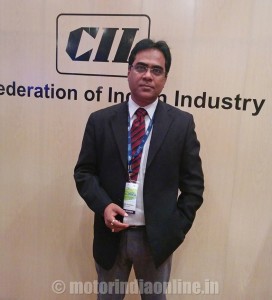India’s current trade is valued at $0.78 trillion, which forms 2.12 per cent of the total world trade. Its exports are only 70 per cent of its imports and are largely directed to regions like the US and EU. These markets are stagnating, and there is a need to diversify. It is in recognition of this that India has signed agreements with a few emerging markets such as the ASEAN members, SAARC nations and others. The recently signed FTA with the Gulf Cooperation Council and the framework agreements which are under negotiation with ASEAN and MERCOSUR offer tremendous opportunities to penetrate new markets.

It is against this background that an interactive discussion was organised in Chennai recently by the Madras Chamber of Commerce & Industry (MCCI) jointly with Athena Infonomics, a research and strategy consulting firm.
AL’s exciting decade of exports
Mr. Arijit Dutta Chowdhury, General Manager, International Operations, Ashok Leyland Ltd., gave a detailed presentation on the country’s export scenario and hindrances it faces due to infrastructural and procedural issues. He said AL has witnessed an exciting decade with regard to exports. Eventhough India’s export revenue has grown only 6.5 times during the decade of 2004-14, the vehicle export revenue has grown 7.2 times in the same period. All this clearly shows that there is a lot of potential left untapped. Most of the multinational OEMs like Hyundai, Nissan and Ford have taken India not only as their production hub but also export hub. There is a clear shift in exports from developed regions like the EU to developing regions like Africa, ASEAN and Latin America.
Mr. Chowdhury further said that as the automobile industry is keen to step up the export momentum, potential derailers, both internal and external, like competition in the export market, tariff and non-tariff barriers and export infrastructure bottlenecks need to be addressed.
He suggested that the following steps may be taken by the Government:
• Adopt a holistic approach to address tariff and non-tariff barriers in the potential export markets.
• Enhance duty drawback so as to effectively counter the cascading impact of taxes and duties.
• Some changes to be made in procedural aspects of EXIM Bank line of credit towards promoting automobile exports.
• Address infrastructure and procedural issues at ports.
• Address geo-political issues and enhance engagement through commercial attache of embassies in target countries and regions.
Mr. Chowdhury also outlined the opportunities available to set up assembly lines for automobiles in some of the competing markets like Brazil, Mexico, Russia, the EU, Indonesia and Thailand.
